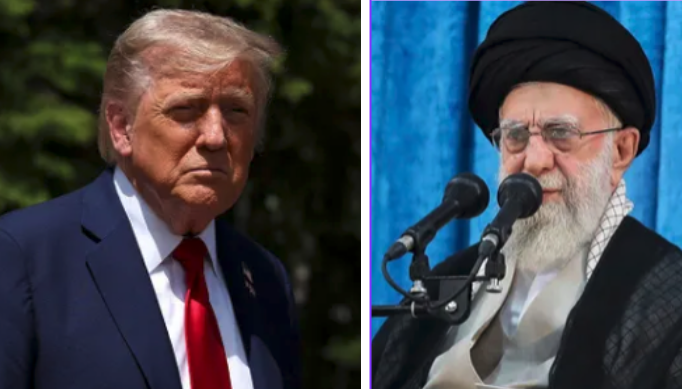Key Point Summary – US at War with Iran
- Trump says “we” have total control of Iran’s skies
- Situation Room meeting on Iran strikes expected “very soon”
- U.S. may target nuclear sites, including underground Fordow facility
- Trump threatens Ayatollah, says he’s “easy target – for now”
- U.S. deploying F-16s, F-22s, F-35s and USS Nimitz to the region
- UK urges restraint; Iran’s former crown prince says regime is collapsing
- Experts warn only U.S. can destroy Iran’s most dangerous nuclear site
Trump Uses “We” — And Signals Action
President Donald Trump ramped up his rhetoric against Iran Tuesday, declaring, “We now have complete and total control of the skies over Iran.” His use of “we” to describe active military involvement immediately sent shockwaves across Washington and global capitals.
A senior White House official confirmed to Fox News that Trump will meet “very soon” with national security leaders in the Situation Room. On the table: potential U.S. airstrikes against key targets inside Iran — including nuclear facilities.
The timing and tone of Trump’s statements have fueled fears that the U.S. has either already entered or is on the brink of war with Iran.
Ayatollah Threatened — But Spared “For Now”
Trump went further in a chilling Truth Social post, stating that the U.S. knows where Iran’s Supreme Leader Ayatollah Khamenei is “hiding” and described him as an “easy target.” However, Trump added, “We won’t act — at least not for now.”
The veiled threat follows weeks of rising tension, with Iranian-backed militias launching attacks on Israel and reports of growing nuclear capabilities inside Iran. Trump’s public messaging seems to be laying the groundwork for justification — and potentially escalation.
Air Power Shifts Into Overdrive
Behind the scenes, the Pentagon is moving more fighter jets into the Middle East. Fox News reports that the U.S. is deploying F-16s, F-22s, and F-35s while also extending air assets already stationed there.
In addition, the USS Nimitz carrier strike group is racing toward the region ahead of schedule, joining the USS Carl Vinson. This rare double-deployment signals a major shift toward readiness and possible engagement.
U.S. May Target Fordow Facility
Top military analysts warn that only the United States possesses the capability to strike Iran’s most fortified nuclear facility — the Fordow Fuel Enrichment Plant, buried deep in mountain rock.
Israel launched strikes on other Iranian nuclear targets last week, including the Natanz facility, but has reportedly held back on Fordow due to its extreme depth and heavy defenses. Experts say it may require a GBU-57 “bunker buster” bomb, and even that might not reach far enough.
Mark Dubowitz, CEO of the Foundation for Defense of Democracies, told Fox News, “Destroying Fordow from the air is a job only the U.S. can do.”
Regime Collapse? Former Crown Prince Speaks Out
Amid the military tension, exiled Iranian royal Reza Pahlavi, son of the last shah, released a video claiming the regime is collapsing. “What has begun is irreversible,” he declared, calling on Iranians to rise up and reclaim their country.
His message arrives as reports emerge of panic in Tehran, with civilians reportedly fleeing the capital in anticipation of potential U.S. strikes.
Allies Warn: Don’t Go Too Far
Across the Atlantic, Britain’s Defense Secretary John Healey called the Iran-Israel conflict “a dangerous moment.” He urged both sides — including the U.S. — to show restraint and pursue diplomacy. Nonetheless, UK military forces are also on alert and repositioning assets in the region.
Healey said joint U.S.-UK posturing should serve as a warning but also reinforce that “the only pathway to peace is diplomacy.”
Are We Already At War?
Trump has stopped short of formally declaring war. But his language, the troop movements, the high-level meetings, and direct threats toward Iran’s supreme leader are signaling something much more serious than saber-rattling.
In the absence of a congressional vote or public debate, the question becomes murky: Has the U.S. already entered a state of war with Iran without officially saying so?
Observers point to past examples of “undeclared wars” — from Korea to Syria — and worry that this could be another chapter written in the shadows, fueled by airstrikes, proxy battles, and presidential posts.
What Comes Next?
The world now waits for the outcome of the Situation Room meeting. Will Trump authorize direct military action against Iran’s nuclear infrastructure? Will he strike at leadership targets? Or will diplomacy somehow pull the region back from the brink?
For now, America has eyes on Tehran. Iran has eyes on the skies. And the world holds its breath.




